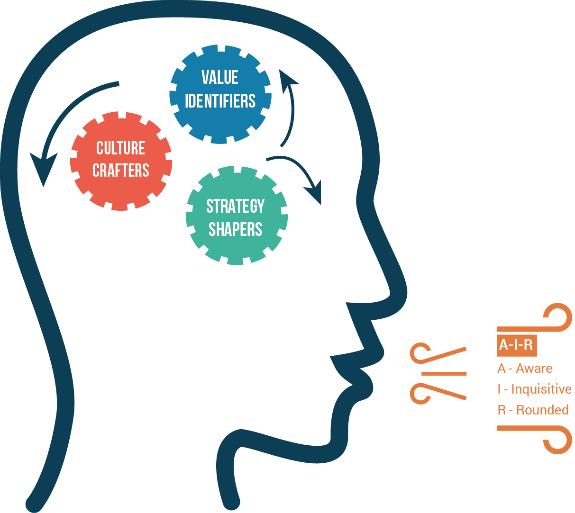
A-I-R
Oct. 3, 2017
In what way do you need to lead your business to achieve your growth ambitions?
This was the burning question that Simon Raby, associate faculty at Haskayne Executive Education and an expert in the growth of Small and Medium-sized Enterprises (SMEs) , struck upon when arriving in the province of Alberta in September 2015. To answer this question, Raby drew on support from the Leverhulme Trust, one of the largest research councils in the UK, his home UK institution (the University of Kent) and Haskayne’s Hunter Centre for Entrepreneurship and Innovation.
After 18-months of research, Raby has received survey responses from over 500 Alberta SMEs and has completed detailed interviews with a subset of ‘High Impact Leaders’. These are leaders of SMEs that are achieving high growth (in revenue, profits and employment) and are disruptive. High Impact SMEs invest in a broader range of innovative activities, and are more diversified in the markets they serve. They exemplify organizations that many of us aspire to create.
So, what did he find?
In studying the behavior of CEOs, Founders and Presidents of High Impact SMEs Raby found that these High Impact Leaders were applying a common set of practices and roles in their daily work, which he labels the “Leader’s Growth Mindset”. Those leaders applying this mindset were generating superior levels of growth, innovation and market diversification. The encouraging finding was that the Leader’s Growth Mindset is something that can be developed in each and every one of us.
The Leader’s Growth Mindset consists of 3 common practices and 3 common roles. To consistently deliver these common practices and roles (which we explore further below) High Impact Leaders had successfully evolved their role as a leader. These leaders had navigated a role transition from a technical specialist to strategic leader, as Raby states:
“Leaders had to remain steadfast in their delivery of their strategic leadership roles. Many Leaders spoke how, in the early days, they found it easy to become sucked back up into an operational vacuum, creating an imbalance between working on and in the business”
Once leaders had navigated this role transition, they were able to take onboard a common set of practices and roles. The 3 common practices enabled High Impact Leaders to connect the outside of the business with the inside:
A - Aware Understand your obstacles and enablers, and take action.
I – inquisitive Connect, pose questions, challenge and seek answers.
R – Rounded Obtain and weigh multiple perspectives.
And, High Impact Leaders were continuously championing 3 common roles in the business:
Value Identifier Create and enable customer value via the business model.
Strategy Shaper Define, drive and evolve strategies for growth.
Culture Crafter Nurture a culture that attracts and retains high quality staff.

A-I-R
An essential ingredient in connecting these externalized practices and internal business roles was the application of a filter. This filter ensured prioritization, alignment and balance in the way new knowledge, skills and abilities were brought into the business. This filtering process was driven by purpose (why do we exist?), and underpinned through clarity in vision (where are we going?), values (what’s important to us?) and people (what knowledge, skills and abilities do we need to succeed?).
Following his Visiting Professorship with the Haskayne School of Business, Raby has remained in Calgary, taking up a Professorship in Innovation and Entrepreneurship at the Bissett School of Business, Mount Royal University. Raby also continues to work in the capacity of Associate Professor with Haskayne Executive Education to develop ways to support the learning and growth of High Impact Leaders.
To access and download the full report navigate to www.mtroyal.ca/businessgrowth
Or contact Haskayne Executive education at execed@haskayne.ucalgary.ca